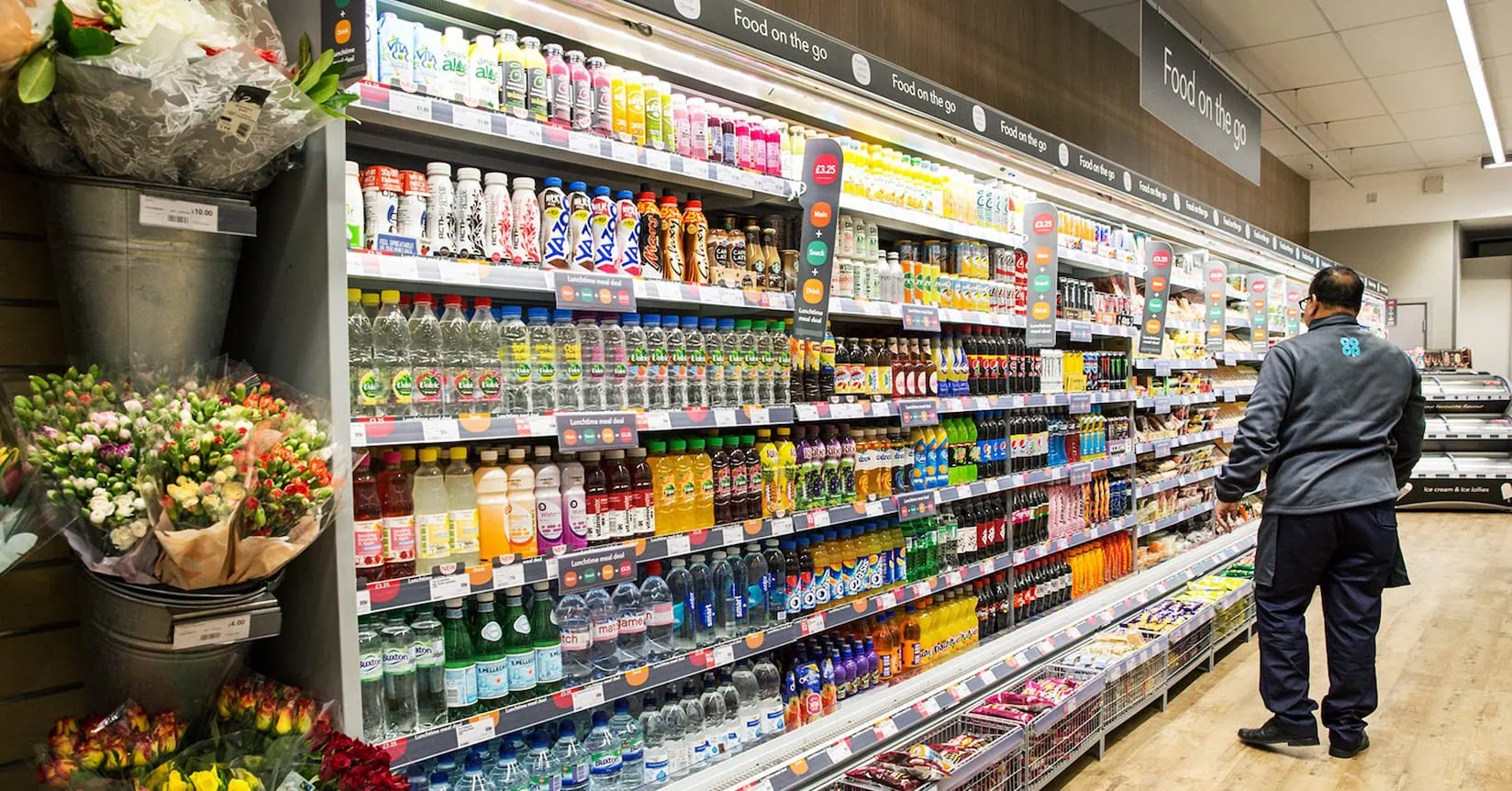In the fast-paced world of Fast-Moving Consumer Goods (FMCG), staying ahead of market trends and making informed purchasing decisions are crucial. Nearly 40% of companies in this sector now use commodity intelligence tools, which offer invaluable insights for optimizing procurement strategies, refining pricing models, and boosting profitability.
These tools have become essential for procurement managers in an increasingly competitive market. By transforming complex data into actionable insights, they enable users to save time, enhance negotiation capabilities, and make well-informed decisions that increase margins and elevate their businesses.
In this article, we explore the four key reasons why commodity intelligence platforms have become essential for FMCG procurement managers. We highlight their key benefits and examine their growing importance in the industry.
1. The Increasing Complexity of Global Supply Chains
The global trade economy isn’t a new concept, but its scale and impact have grown exponentially in recent decades. Especially the FMCG food sector is characterised by complex global supply chains. Companies source raw materials from various parts of the world, each with its own market dynamics, risks, and opportunities. Managing these trading streams requires sophisticated tools that can provide comprehensive and real-time data on various commodities.
This transformation can be attributed to several key factors. Technological advancements in transportation and communication have drastically reduced barriers to global trade. Container shipping, for instance, has revolutionised the movement of large quantities of goods across oceans. Since the first container ship set sail in 1956, container shipping has grown to account for 90% of global trade.
Trade agreements like the North American Free Trade Agreement (NAFTA) and the formation of the European Union (EU) have facilitated smoother trade between member countries by reducing tariffs and standardising regulations. Trade between the U.S., Canada, and Mexico, for instance, increased from $290 billion in 1993 to over $1.1 trillion in 2016 due to NAFTA.
Emerging markets, particularly in countries like China and India, have become manufacturing powerhouses supplying goods at competitive prices. China’s share of global exports surged from 1.8% in 1980 to 13.2% in 2018, highlighting the significance of these markets in global trade.
Consumer demand has also played a crucial role. As tastes and preferences become more globalised, there’s an increasing demand for diverse products, pushing companies to source ingredients and products from around the world.
Key benefit: Aggregated Data from Across the Globe
As the world embraces an interconnected market, commodity intelligence platforms have become essential. They provide a comprehensive overview of global trade lanes and prices, making trade easier to understand and navigate. By aggregating data on production, consumption, and trade flows from various sources, these platforms offer a broad view of global market conditions. This enables companies to understand market dynamics across different regions, ultimately facilitating more informed and strategic trade decisions.
2. Climate Change and Weather Volatility
Volatile weather conditions have become a significant challenge for companies in commodity markets. Climate change, driven by human activities, has increased the frequency of extreme weather events and altered growing seasons, threatening food security and increasing commodity price volatility. These unpredictable events can disrupt the production and availability of raw materials, leading to price spikes and supply chain issues.
The average global temperatures have been steadily rising over the past century, with a notable increase in the frequency and intensity of extreme weather events. According to the National Oceanic and Atmospheric Administration (NOAA), 2023 was one of the hottest years on record, with global temperatures averaging 1.1°C above pre-industrial levels. This rise in temperature has had profound effects on agricultural production.
Drought conditions have become more common in major agricultural regions. For instance, the 2022 drought in the American Midwest resulted in an 8% reduction in corn production compared to the previous year. This shortage led to a 15% increase in corn prices. Extreme rainfall and flooding have also caused significant damage to crops. In 2021, the floods in China’s Henan province, a critical grain-producing area, led to the loss of over 9.7 million acres of crops. Consequently, global grain prices for wheat and corn surged by 10-15%.
Recent weather conditions have severely impacted other commodities as well. For example, the olive oil market has seen significant price increases due to droughts in Spain, which is the world’s largest olive oil producer. Spain experienced a drastic decline in production during the 2022-2023 agricultural year, leading to a 50% drop in output. This reduction in supply has driven olive oil prices to record highs. Similarly, in Portugal, production fell by 40% due to extreme droughts, further exacerbating the shortage and pushing prices upward.
The cocoa market has also been affected by adverse weather conditions. In the first half of 2024, cocoa prices saw a dramatic 153% increase, driven by poor weather conditions in West Africa, the primary region for cocoa production. Droughts and irregular rainfall in Ghana and Côte d’Ivoire significantly reduced cocoa yields, resulting in a substantial shortfall in supply. This supply shortage, combined with logistical problems and crop diseases, has led to a 35% reduction in cocoa exports from Côte d’Ivoire and a 49% reduction from Ghana
The decline in cocoa production also led to a significant reduction in exports from the main producing regions, Côte d’Ivoire and Ghana. Côte d’Ivoire saw a 35% reduction in exports, with volumes dropping from around 690,000 MT in Q1 2023 to 445,000 MT in Q1 2024. Similarly, Ghana experienced a 49% reduction in exports, with volumes falling from around 250,000 MT in Q1 2023 to 127,000 MT in Q1 2024.
Key Benefit: Satellite-Based Analytics and Weather Forecasting
Severe weather events underscore the importance of commodity intelligence platforms. These platforms provide businesses with real-time data and advanced analytics to navigate weather-related disruptions and market volatility. By offering precise weather forecasts and monitoring conditions in real-time, they enable companies to anticipate disruptions and adjust supply chains accordingly. This capability helps mitigate the impact on production and pricing, ensuring smoother operations and better risk management.
3. Geopolitical tensions
Geopolitical events can cause significant volatility in commodity markets, disrupting supply chains and leading to sharp price fluctuations. Recent conflicts have had profound effects on global markets. For example, the Ukraine-Russia conflict has severely disrupted supply chains, as these two nations account for nearly 30% of global wheat exports. In the first half of 2022 alone, global wheat prices surged by over 40%, impacting food security and increasing costs for industries dependent on wheat and related products.
Similarly, the Israel-Palestine conflict has impacted commodity prices. During a recent escalation, Brent crude oil prices rose to $90.13 per barrel, a three-year high driven by fears of supply disruptions. Higher oil prices increased transportation and production costs for various commodities, including vegetable oils, leading to a 5-10% rise in vegetable oil prices and other agricultural commodities due to increased production costs and market uncertainty.
Geopolitical tensions often manifest in the form of economic sanctions and trade restrictions, which can further exacerbate market volatility. The trade tensions between the U.S. and China, for instance, led to significant fluctuations in the prices of various commodities, including soybeans. In 2018, when China imposed tariffs on U.S. soybeans, prices plummeted by nearly 20%, impacting U.S. farmers and global markets. These trade disruptions highlight the interconnectedness of global markets and the cascading effects of geopolitical decisions on commodity prices.
Key Benefit: Real-Time News on Trade Policies, Import Tariffs, Trade Agreements, and Sanctions
To manage the risks associated with geopolitical events, companies increasingly rely on commodity intelligence platforms. These platforms offer real-time global news, providing up-to-date information on political developments to help businesses stay informed about potential risks and opportunities. They also provide insights into trade policies, including the latest import tariffs, trade agreements, and sanctions. This enables companies to anticipate and respond effectively to changes. Advanced analytical tools help companies understand the potential impact of geopolitical events on commodity prices and availability, facilitating better strategic planning and decision-making.
4. Digital Transformation and Data-Driven Decision Making
Cutting-edge technologies like artificial intelligence (AI), machine learning, blockchain, and Internet of Things (IoT) sensors are revolutionising agricultural commodity procurement. This digital transformation is essential for modern businesses, fundamentally altering operations and decision-making processes. It makes traditional procurement more predictive, transparent, and efficient. For FMCG procurement managers, adopting these technologies is crucial due to the growing pressure to reduce costs and improve efficiency.
AI is at the forefront of this revolution, particularly in price, stock, and production forecasting. By analysing historical pricing data, market trends, and external economic indicators, AI algorithms can predict future prices with remarkable accuracy. This foresight allows procurement professionals to make well-informed decisions about when to purchase goods, ensuring they secure the best prices and maximise cost savings.
Machine learning complements AI by enhancing data analysis capabilities. It processes vast amounts of data swiftly, identifying patterns and anomalies that might elude human analysts. This depth of insight empowers procurement professionals to make more strategic decisions regarding supplier performance, risk factors, and market conditions. Besides excelling in predictive analytics, automation of routine tasks like invoice processing, order matching, and contract management becomes seamless with machine learning, increasing efficiency and reducing human errors.
Blockchain technology further revolutionises procurement by providing unparalleled transparency and traceability. This decentralised and immutable ledger records every transaction transparently, making it easy to trace the origin and movement of goods. Enhanced security is another benefit, as blockchain’s robust structure makes it difficult to alter or falsify records, thereby reducing the risk of fraud and increasing trust among parties. Moreover, smart contracts—self-executing agreements coded with contractual terms—automatically enforce and execute agreements, eliminating the need for intermediaries and accelerating the procurement process.
IoT sensors bring real-time monitoring capabilities to the procurement landscape. These sensors provide up-to-the-minute data on the condition and location of goods in transit, aiding in tracking shipments, monitoring inventory levels, and ensuring the proper handling of sensitive items. Predictive maintenance is another advantage, as IoT sensors can monitor the health and performance of machinery used in production, preventing breakdowns and extending equipment lifespan, thereby ensuring smooth operations. Furthermore, IoT data optimises various supply chain aspects, such as route planning for deliveries, warehouse management, and energy consumption, leading to significant cost savings and increased efficiency.
Key Benefit: AI-Generated Price Forecasts and Advanced Machine Learning
Commodity intelligence platforms are essential for companies looking to leverage digital transformation to their advantage. They provide comprehensive data analytics, AI-generated forecasts, and real-time insights that support data-driven decision-making. This capability is particularly valuable in the FMCG sector, where margins are tight and the ability to react quickly to market changes can provide a significant competitive advantage. By harnessing these tools, companies can enhance their agility and optimise their procurement strategies effectively.
From managing the complexities of global supply chains and addressing the impacts of climate change to staying updated on geopolitical developments and leveraging digital transformation, these platforms provide comprehensive solutions essential in today’s market. For further insights into optimising your procurement strategies, read our article Best 10 Commodity Tools for 2024: Final List for a deeper dive into the best tools available.



